| Časopis Umělec 1998/6-7 >> Kdo na to má? | Přehled všech čísel | ||||||||||||
|
|||||||||||||
Kdo na to má?Časopis Umělec 1998/6-701.06.1998 Vladan Šír, Hana Lešenarová | instituce | en cs |
|||||||||||||
|
Almost ten years after introducing market economy, state institutions are still fighting with new conditions. In addition to capital markets, this can be well seen in culture. Just a few cultural organizations under state administration are able to reach up to effective and fair functioning private companies.
Perhaps this calm atmosphere in state cultural organizations was caused by a well-known statement of former federal Finance Minister and promoter of the economic reform Václav Klaus who has once said that when the apartment is being reconstructed, the library has to be moved out on the balcony. Development in private sector, however, has not missed culture and it should have been clear that the state would stay behind and wouldn’t be able to fulfill the tasks it has taken up on itself. The leading institutions in visual arts include the National Gallery and state museums and galleries. Conditions for smooth operation on the market are set by the Ministry of Culture. There are a few quite successful and ambitious private galleries and art dealers out on the quickly developing market who are finding out that their counterparts in state offices and organizations are not ready and equipped for effective work. Some of them even realize that they are not the only ones suffering from the state of affairs (loosing business) but that the state also faces a situation when it either looses money directly or misses unique opportunities that will be later paid for much more money coming out of pockets of those who pay the state. ”I believe that I need the National Gallery,” says Jiří Švestka, owner of gallery of the same title focusing on trade with modern and contemporary art. ”National Gallery is setting a certain climate, it needs to fulfill an educational and informative role.” Creating a climate and the educational role, according to Švestka, creates interest and demand for art in society on which his business depends. If state collections are not able to attract public to their exhibitions, the number of people interested in actually buying art will be very low. This concerns especially contemporary art as modern and older art works are financially inaccessible for majority of the nation. This is also one of the main reasons why The Modern and Contemporary art Collection of the National Gallery at Veletržní palác is under such heavy criticism. Private gallerists see the roots of bad cooperation with state museums and galleries in lack of knowledge of how the market works and what opportunities it provides. ”There is an unhealthy attitude towards private sector,” says Švestka. ”[State institutions] don’t even know what it is.” Representatives of state institutions, on the other hand, blame their bosses in the government and in the Parliament who do not throw enough money at the cultural organizations for their development. This is the most common argument so often presented by media here. People outside the state sector, however, are of a different opinion. ”It’s not true that they don’t have enough money,” says Petr Meissner who owns the U Karlova Mostu antiquity store and co-owns the Meissner-Neumann auction house. ”Things may be financed from other than state money.” ”The problem is ideas, engagement, not money,” Švestka agrees. At issue, according to both, is lack of conception of what the state cultural institutions would want to do if they actually had the money. ”The National Gallery says it doesn’t have any money so it doesn’t need any conception either,” he says. But if there was a conception of developing collections, he opines, the museums would be able to find the money on the market. ”This is about fundraising,” he says. Museums and galleries dispose with a number of forms of fundraising from ”friend of the museum” or ”patronage” programs to seeking money from sponsors for individual larger projects and mostly have entire fundraising departments. ”This should have a central solution in the National Gallery,” suggest Švestka. Meissner agrees that development of state museums suffers from lack of conception which results in a state of affairs when ”they don’t know what makes sense for the state collections”. He gives an example of valuable documents from the John Huss period recording Czech-German relations at the turn of the 15th and 16th Centuries. The entire collection of documents is worth 10 million crowns ($345,000 US). The state expressed interest in the collection but was able to put together only half of the amount to buy a part of it. Meissner still owns the rest but he warns that the collection is demanded abroad and he may sell it at any time. ”I kept it because it belongs (to the Czech state). But I’m not a museum, I cannot give the state a credit,” he says. Collection of the John Huss documents is an example that art works constantly move on the market and are not waiting for the slow state offices. In addition, their prices go up as the market continuously develops here. Eventually, the state officials may find out that they desperately need some works to fill up gaps in their collections but they will be much more expensive than they are today. Vladimír Železný, Director General of the widely popular private Nova TV, has been busy buying art and creating his own private collection in the past two and a half years. The collection focuses on modern and avantgarde artists and art of the 50’s and 60’s. From his own experience, he knows about the price-rise. ”[A few years back] I bought one of the five most famous Filla paintings for one eighth or one tenth of its today’s price,” he says. ”Czech art started to be discovered. In case of modernism and the avantgarde, prices are on Western levels.” He even bought some modern and avantgarde works cheaper in auctions in London and New York. His collection comprises of almost 400 objects, Železný noted in his very first interview concerning the private collection which he will make public in Spring 1999 in the form of a ”picture gallery”. State collections had a chance to buy modernist works for low prices due to restitution of property confiscated by the Communist regime. Institutions, such as Veletržní palác in the case of the Waldescollection’s, were offered exclusive terms for buying the works which were until now under their administration. Meissner, who is a Waldes representative for dealing with state officials, however found out that the National Gallery did not exactly know what works they would want in their Modern and Contemporary Art Collection. ”The proposal has to come from the collections, the beginning here is just missing,” Meissner said. If the gallery waits with the selection, it may be late and it will have to buy the works for market prices. The Waldes family orders to Meissner of this Spring are clear: sell the collection immediately and do not wait whether the state will express interest in other works. ”My orders are to be tough,” he said. ”State institutions are not flexible. Nobody is responsible to sign some paper. There is no contract for anything, everything is just a verbal agreement. There is an opportunity to negotiate but if there is nobody to negotiate, nothing will happen.” Železný has worked on his collection since June 1996 and used the opportunity on the market at that time. ”It was possible to build something comprehensive on the market,” he says. There are still some chances out there such as the 60’s, his collection’s second part. ”Czech artists were [at that time] in the mainstream of world art and there are still things to buy.” Despite the complaints of the state cultural institutions’ representatives that the government is giving very little money for their operations and development, they compete for the little there is, even among the individual collections of the National Gallery. ”Collections lobby against each other, there is a conflict and the criteria [for distributing finances] are less than clear,” says Meissner. As to the money issue, Švestka has a radical advice for the National Gallery saying that they should get rid of the works which are not as valuable for the collections. Money coming from the sales could then be invested into buying new works. ”The National Gallery should sell. Say, German and Austrian paintings of the 19th Century that have no chance to be exhibited, there are hundreds of them and you can tell what is good for putting above your sofa and what belongs to a museum,” he says. The Gallery’s General Director Dagmar Šefčíková, however does not consider such a possibility acceptable for a state institution. ”The National Gallery does not own the things, it is in charge of state property,” she says. ”It doesn’t work the way that two curators would sit down and decide: ‘We don’t need this.’ Classification of values and non-values is changing in time. [Our] mission is to collect and record. We are not here to just exhibit but keep things. It is impossible for us to just put things into a bazaar.” Železný, as a private collector, does not have to be bothered with this problem. He sells and buys exactly according to his conception of the collection. ”It happens that [works by a certain artist] start to accumulate,” he says. ”I clean the collection regularly.” He also points out danger one is facing when building a collection – many of the works may be false. Some of the works turn out to be false even though they have an official certificate and signature of respected names. ”If I was living abroad, I would file a law suit,” he says. Acquisition and buying new works for the collections represents yet another big problem for the state institutions, private dealers and gallerists claim. Successful acquisitions require knowledge of the market, of what opportunities there are, what individual collectors own and whether they are willing to loan the works on a long-term basis or even donate some of them. Švestka, who was once a member of the Modern and Contemporary Art Collection’s acquisition committee approving curator’s proposals for additions, however, does not trust the current system of acquisitions. ”The purchases were done through friends, personal taste was a decisive factor and based on this, the proposals were being submitted,” he recalls, ”they don’t know what’s on the market.” General Director Šefčíková admits that ”the collections should have a clearer idea of what they want more, what they want less and why.” In case of older works, however, the collections fight with their shortage on the market and higher prices. ”In case of older things, there are very few accessible artworks on the market and it also depends what the institution can afford. Right now we can’t afford it.” The conflict between the private and state sectors in visual arts is becoming quite significant and both sides look at one another with suspicion. Železný, at the moment, is one of very few people here who act with enough self-confidence and keep within the borders of their sector. ”Private collection belongs to the one who collects, it’s his opinion. Averaged-out opinion of expert is worthless,” he says. A building downtown Prague will house his collection and will include a club, depository, computers with data on the artists. His foundation will take care of the documentation and gallery activities. Meissner, too, is trying to set clear rules on the market to minimize meaningless conflicts and suspicion. ”The Waldes collection went on the market publicly, we’d like [the sales] to be as transparent as possible.” The National Gallery’s new General Director Šefčíková is also preparing some changes of which she believes will make work of the institution more efficient. New organizational policy will be finished at the end of November and will be implemented as of January 1, 1999. Each collection will newly have an expert committee that will create long-term conception in cooperation with current scientific and acquisition committees. ”In some cases, members in the committee will be identical with the acquisition committee,” she said. From the private sector’s point of view, the lack of conception already has an impact that will be hard to correct. ”The consequence is that Veletržní palác has no position, no prestige,” says Švestka. ”Most of the collections are resigned,” Meissner claims. ”Everybody is crying that no cultural values are being created but nobody really wants to.” Hana Lešenarová is news editor of the Prague Business Journal
01.06.1998
Doporučené články
|
|||||||||||||
|
04.02.2020 10:17
Letošní 50. ročník Art Basel přilákal celkem 93 000 návštěvníků a sběratelů z 80 zemí světa. 290 prémiových galerií představilo umělecká díla od počátku 20. století až po současnost. Hlavní sektor přehlídky, tradičně v prvním patře výstavního prostoru, představil 232 předních galerií z celého světa nabízející umění nejvyšší kvality. Veletrh ukázal vzestupný trend prodeje prostřednictvím galerií jak soukromým sbírkám, tak i institucím. Kromě hlavního veletrhu stály za návštěvu i ty přidružené: Volta, Liste a Photo Basel, k tomu doprovodné programy a výstavy v místních institucích, které kvalitou daleko přesahují hranice města tj. Kunsthalle Basel, Kunstmuseum, Tinguely muzeum nebo Fondation Beyeler.
|







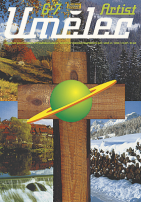











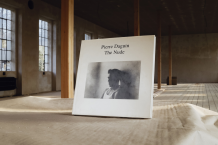




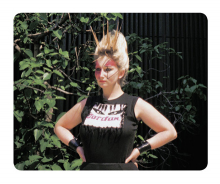
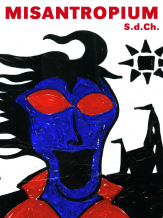
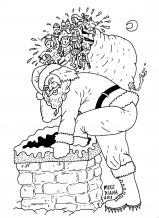
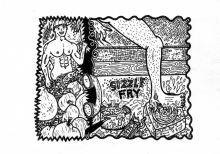


 23.05.-17.06.2017 STU MEAD & MIKE DIANA IN PARIS
23.05.-17.06.2017 STU MEAD & MIKE DIANA IN PARIS
Komentáře
Článek zatím nikdo nekomentovalVložit nový komentář